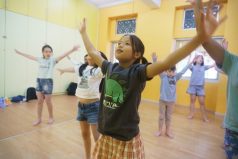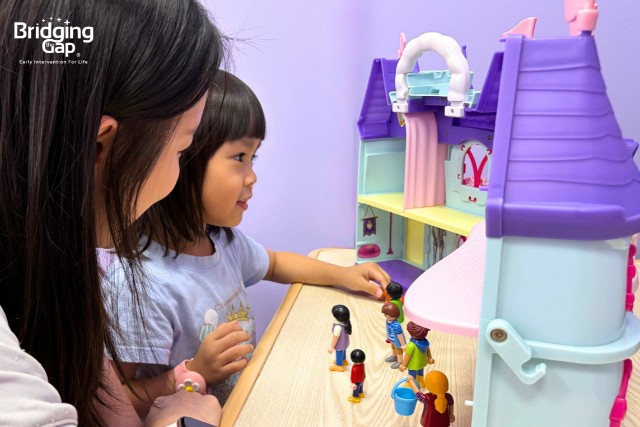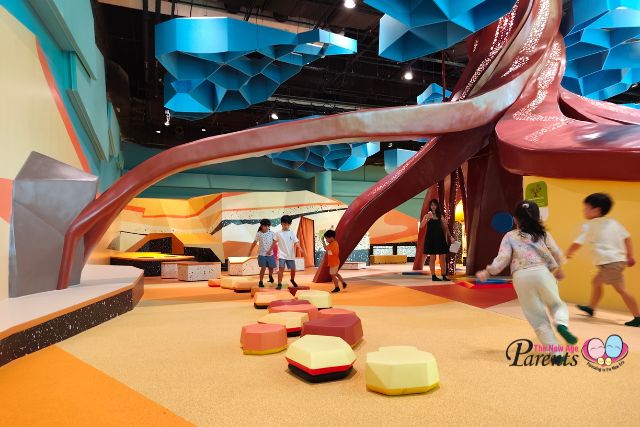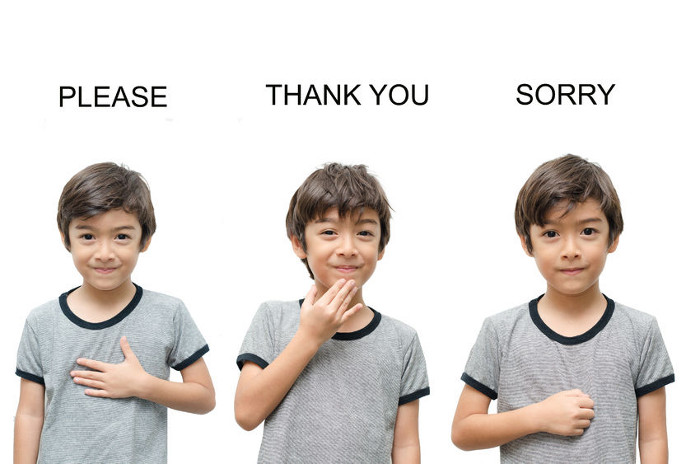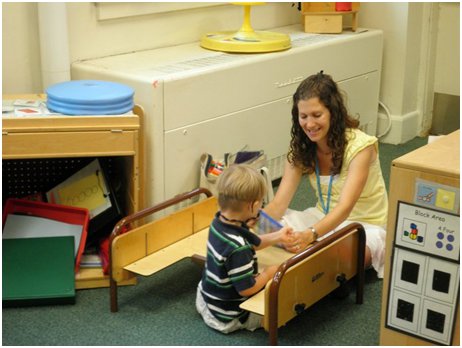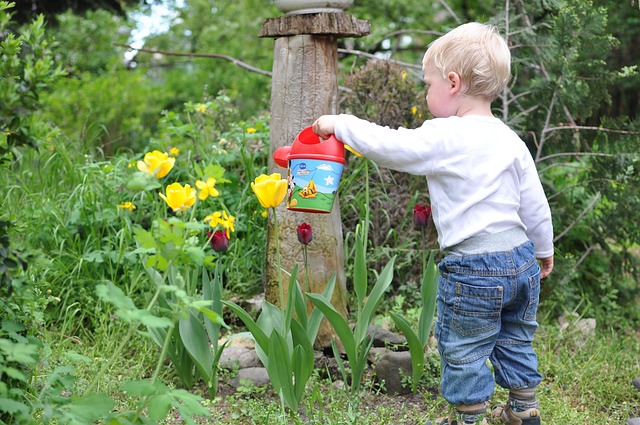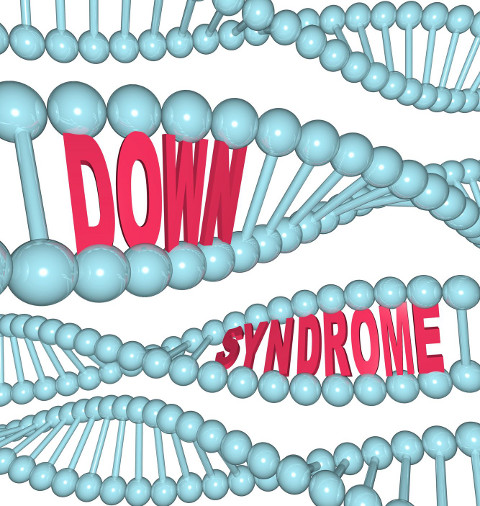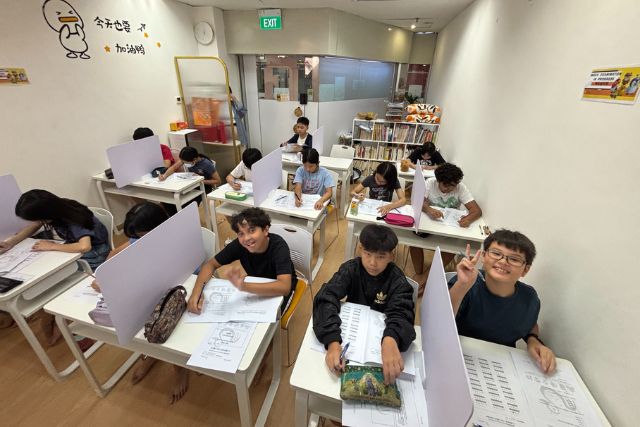When we talk about Special Needs Education, these two terms will often be heard: ‘integration’ and ‘inclusion’. So what exactly are integration and inclusion?
Integration represents the physical presence of a person with special needs (or commonly known as disability) in a mainstream educational setting. While children with special needs may share a certain degree of common purpose and activity with their same-age peers, special education and aid are provided for them in a separate setting within the school.
Inclusion on the other hand, is the participation of a person with special needs alongside their non-disabled peers in all aspects of school life (academic, extra-curricular and non-academic activities). This means they are full-time active members of the mainstream educational setting and necessary supports are provided for them to participate meaningfully within their classrooms.
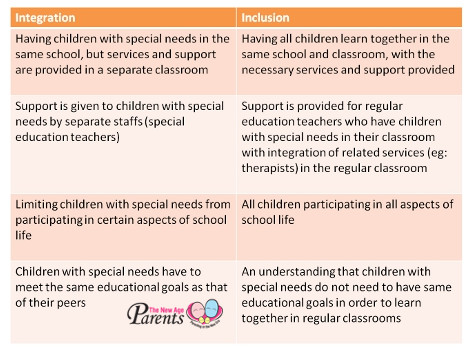
Singapore – Integration or Inclusion?
With these in mind, you might ask: “What about Singapore? Are our local schools integrative or inclusive?”
Let us take a look at the Primary Schools.
At the lower primary level, the ‘Learning Support Program’ (LSP) provides support for those who face difficulties with Literacy and Mathematics. During the curriculum time, these identified students proceed to a separate setting in the school, where the LSP teacher will provide them with specialised educational support. This program is more reflective of an integration approach.
However, with the increased awareness of a need to become an inclusive society, and to meet the growing needs of students with special needs, the Ministry of Education (MOE) has initiated the deployment of Allied Educators since 2004.
The Allied Educator (Learning and Behavioural Support) is trained in special needs, to provide in-class support for children with mild special needs. He or she provides structured and systematic support to students with mild special educational needs (SEN) in mainstream schools, and enables them to integrate better in the mainstream schools.
In March 2018, Channel News Asia reported that more support will be provided for Allied Educators to meet the growing number of special needs students in Singapore.
Barriers To An Inclusive Classroom
Melisa Neo, an early childhood educator, has observed that although there are a handful of preschools and kindergartens that are striving to become inclusive, most of the local Child Care Centres and Kindergartens still lack the knowledge, resources and support to provide effective early intervention.
“This could be due to the lack of therapists who can provide on-site services such as physiotherapy and speech therapy. Fortunately, these challenges can be gradually overcome by training early childhood educators to create a curriculum that can be adapted to each child’s individual learning needs and abilities. Furthermore, trained educators in special education can also be placed in the schools,” Melisa adds.
Lynn Thng, founder of Kids Cove, a centre for children with learning differences, believes that accepting an inclusive classroom concept is not easy, especially for parents.
“For parents with normal developing children, the worry is that their child may be on the losing end, as classes are disrupted when teachers have to cater to the specific learning needs of the children with special needs.”
To look at the benefits of inclusion, Lynn encourages parents to look at the benefits from the social aspects, and not just look at it from the aspect of academic learning or both groups of children.
“For inclusion to be beneficial for children with special needs, the commitment of preparing the child to be mainstream ready is more important than academic pursuits,”
What does it mean for a child with special needs to be mainstream ready?
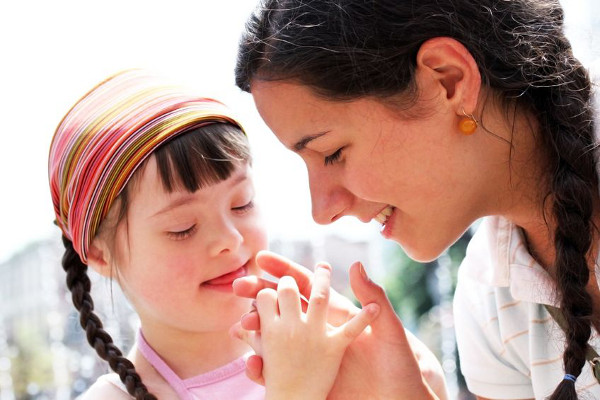
“For learning and inclusion to be effective, children in the classroom have to be equipped with basic functional social and communication skills, so that both groups of children can interact with one another,” shares Lynn, who has 14 years of experience working with children with special needs.
And what constitutes as basic skills? Lynn points that it is the ability to follow instructions, initiate, and request.
In order for this to work, she emphasises the need for parents and teachers need to work together and do their part to facilitate, so that the rate of successful inclusion can be achieved.
“Teachers need to assure parents that the are able to cope with children of different learning needs, and parents need to listen and have trust in the teacher, that their child’s teacher is trained and qualified to do what’s best,”
Inclusive Preschools in Singapore

Melisa believes and advocates strongly for an inclusive setting, where no child gets left behind. At the present moment, she sees that steps are taken to shift the education system towards one that is inclusive.
For example, Kindle Garden is Singapore’s first inclusive preschool that caters to children of different needs. In this preschool, students vary from mainstream ability children to those with severe needs. About 30 per cent of the 80 or so children currently enrolled have special needs such as autism, Down Syndrome or cerebral palsy.
There is also a growing number of preschools in Singapore are beginning to offer an inclusive model. The Inclusive Preschool model is also among a slew of initiatives to strengthen support for people with disabilities, as unveiled by MSF at its Committee of Supply debate. Over the next few years, it will also work with the Ministry of Health to form a network of touch points for early detection of developmental needs in children.
Melisa quips, “Even though it is lofty and difficult as it requires the support of not just professionals in the early education field, but from parents who are one of the stakeholders in the education system, inclusion is not impossible.”
* * * * *
Like what you see here? Get parenting tips and stories straight to your inbox! Join our mailing list here.
Want to be heard 👂 and seen 👀 by over 100,000 parents in Singapore? We can help! Leave your contact here and we’ll be in touch.









